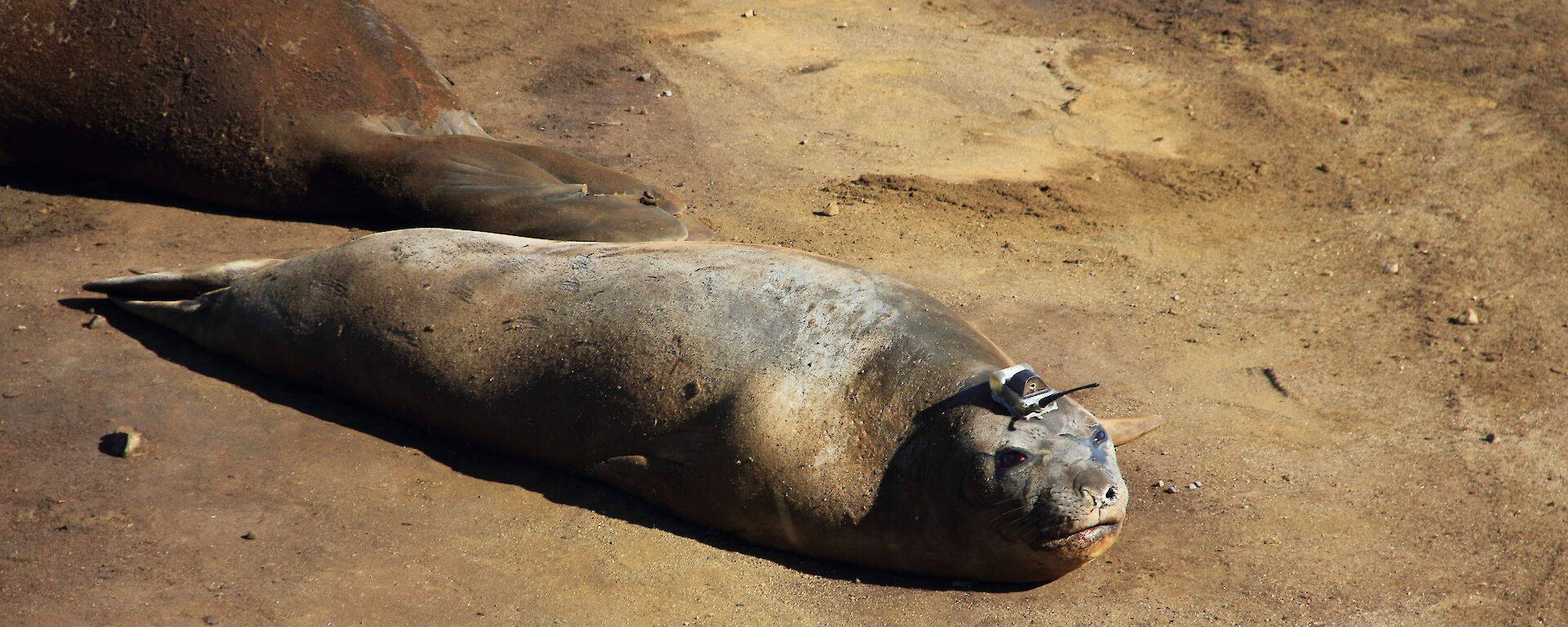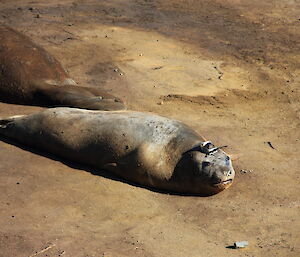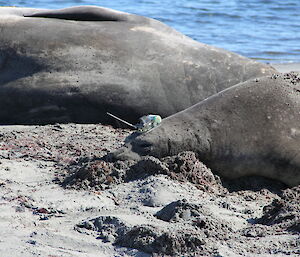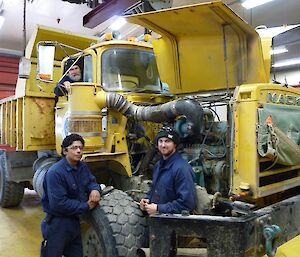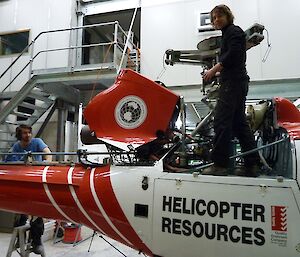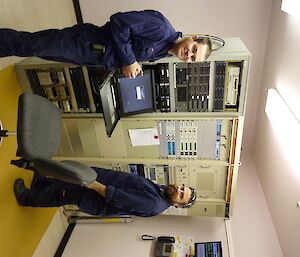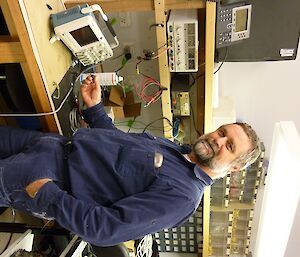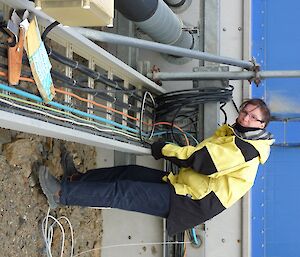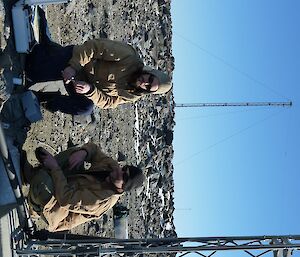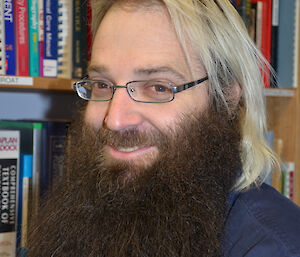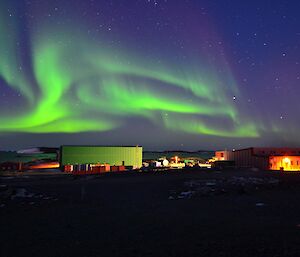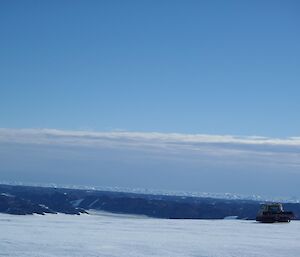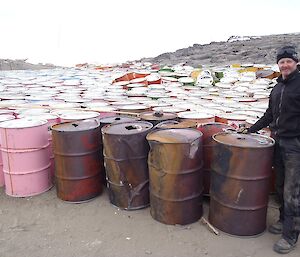Last year in This Week at Davis, one of the most popular features was ‘Jenn’s Ten’. This was a riveting series of expeditioner interviews conducted by Jenn McGhee which sought to delve deep into the psyche of those special people who journey south to live and work in the vast white continent that is Antarctica. This year the tradition continues with our Expedition Medical Officer Jan Wallace taking over the reins to probe deeply (in a non-medical fashion) to reveal the inner selves of our expeditioners. This new and exciting segment for 2012 will be known as ‘Doc’s Dozen’.
Doc’s Dozen #1
An interview with David Hosken — Lidar Scientist/Fireteam/SAR Team/Hydroponics Gardener/Beard Grower Extraordinaire
Laser Dave, is this your first trip to Antarctica and what brought you here? (and why have you been here so long?)
This is my first trip to Antarctica. I left Hobart on Voyage 1 in October 2010 and won’t be back in Australia until mid April 2012. Hopefully I will clock up 500 days at Davis. I came here from Adelaide after completing my PhD in laser development, so this was an opportunity to work in the field and my first real job after being a professional student.
What is it like being a Lidar Scientist here?
It’s really good. I am up when everyone else is asleep plus I get to see lots of auroras and wake other people up. The down side is trying to sleep during the day.
If not a Lidar Scientist what job would you do?
I would teach high school maths and physics. I would love to inspire the students to study science. A lot of teachers don’t have practical experience in science and I would like to show the students that science can take you to exciting places.
Best gig as a Lidar Scientist?
This has been my only job, so that would be here. As a student it was spending 5 months at MIT in Boston.
Best experience in Antarctica?
My trip to the Rauer Islands in a Haggland last September was a highlight, also watching auroras from a field hut is fantastic.
What do you love about Antarctica?
Playing golf next to the Sørsdal Glacier was excellent and I love the Adélie penguins. They are so full of character.
Who inspires you?
My Grandfather who has just passed away recently. He always brought out the best in people and had a great love of family and traveling.
What have you learned living in a small community?
Heaps! Relax, smell the roses, watch the grass grow (note to self…he really has been here too long). I have learned about the nature of change in the environment, the light, the sea ice. Change is inevitable.
If you were granted one wish, what would it be?
I would have done this sooner.
If you were a car, what would you be?
Nothing fancy, a Commodore or Falcon that does the job, but I would like to be a Mustang!
What is in store when you return home?
I can’t wait to meet my 14 month old nephew Bailey Jack and start corrupting him. I will be getting rid of the beard and moving to Western Australia with my other half to finally grow up and get a real job.
Laser Dave, how did you get your nick name ‘Fluffy’?
Hoops and Slumpy McGhee were responsible. After last Mid Winter’s hair dye, my hair was so dry I had to saturate it in conditioner and when it was dry it fluffed up like a shitsu. (Dr Fluffy is one on the most hirsute men I have ever seen!)

